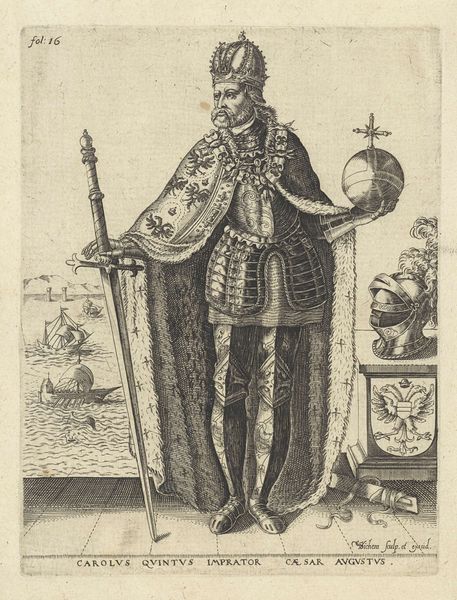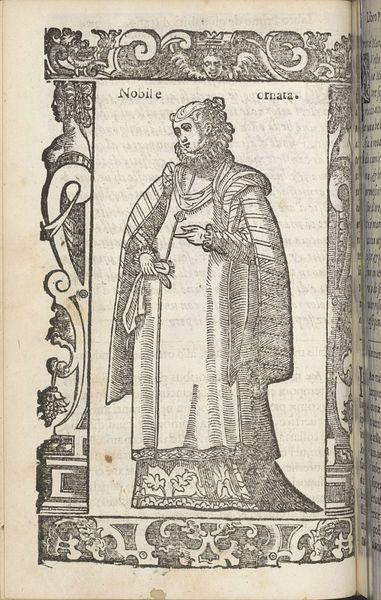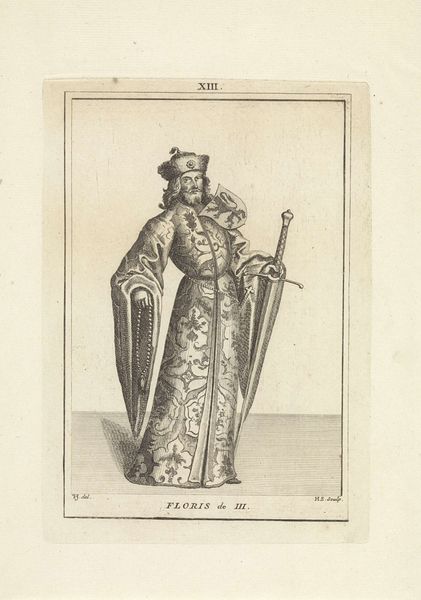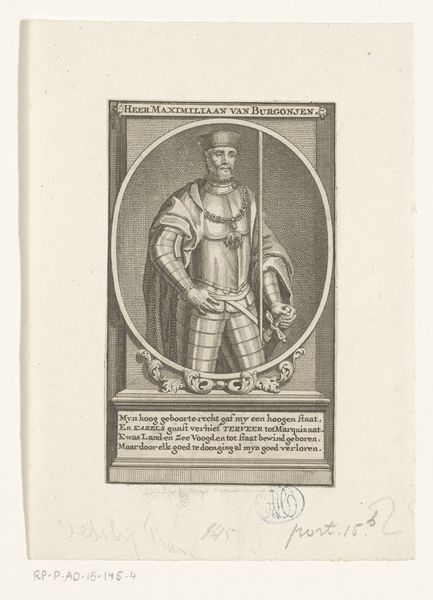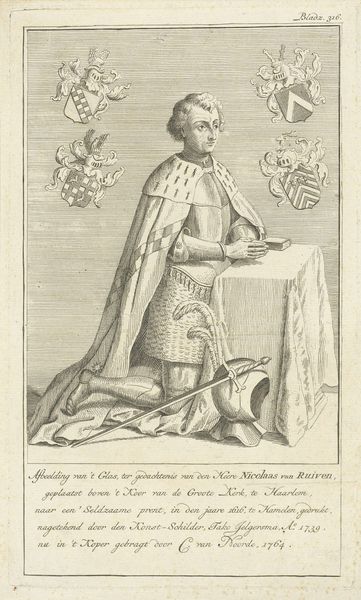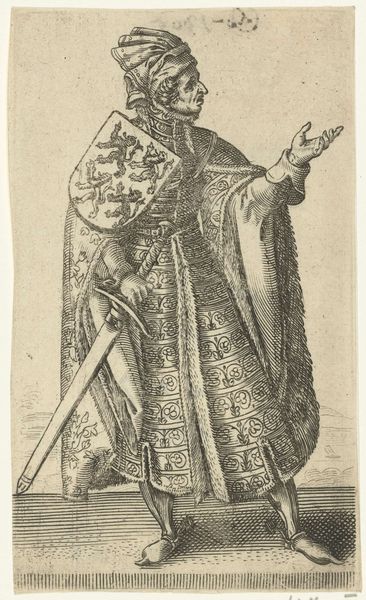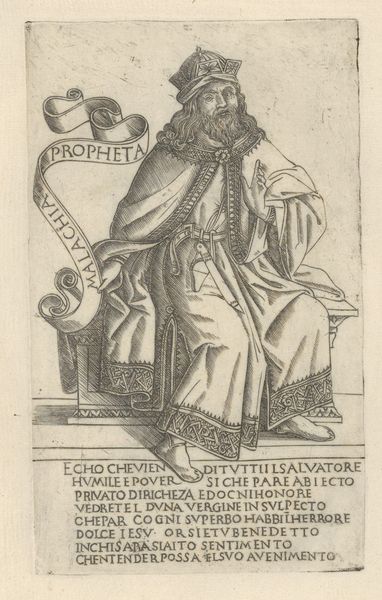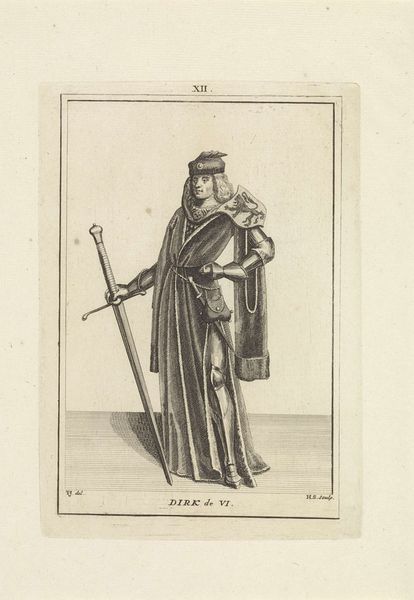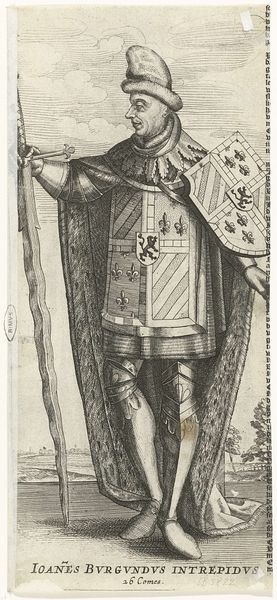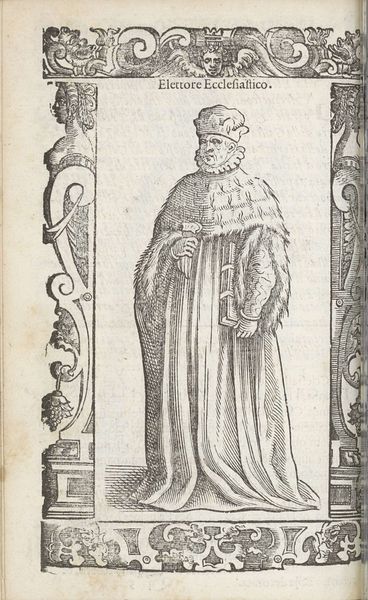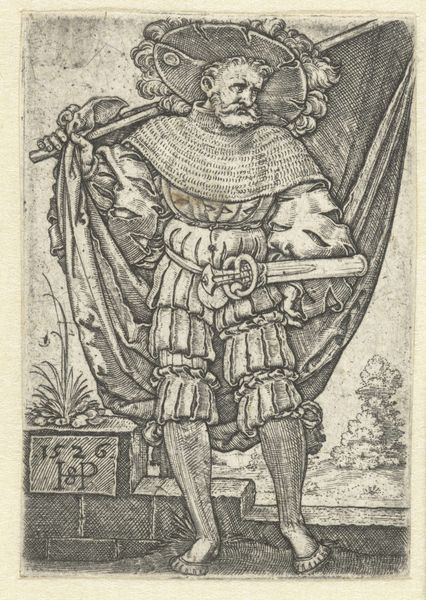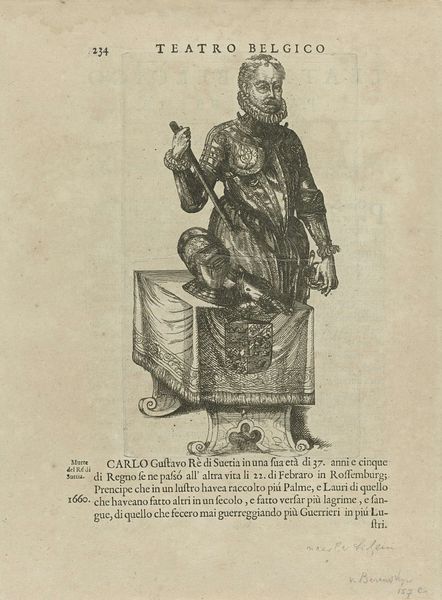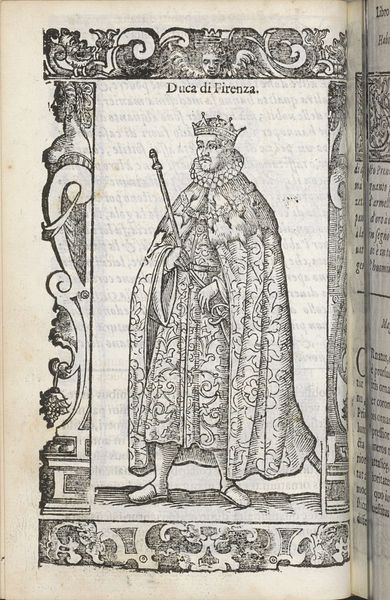
print, engraving
#
portrait
#
medieval
# print
#
history-painting
#
engraving
Dimensions: height 161 mm, width 86 mm
Copyright: Rijks Museum: Open Domain
Curator: Well, look at this fellow! He seems rather pleased with himself. Or is that just the armor? Editor: That's Pieter Feddes van Harlingen's engraving, "Portret van Karel V", dating from around 1611 to 1623. It’s currently housed here at the Rijksmuseum. Curator: Ah, Charles the Fifth. Always with a sword in hand, ready to rule the world. There's a stern confidence here, isn't there? He appears ever so solemn, almost melancholy, as if burdened by the weight of all those earthly possessions. That orb looks heavy! Editor: Engravings like this circulated widely and were crucial in shaping the image of powerful figures. The printing press enabled portraits like these to be distributed for a globalized recognition that would reach various levels of society. Look at how he holds that globe—he has firm control, which must have communicated something important. Curator: But there’s a frailty too. A vulnerability that etching somehow allows through the steel. Maybe it's the face, or that the armour seems slightly too big for him. Makes you think about the person behind the emperor, what a funny and fascinating little thing! Editor: The artistic merit, as I see it, also lies in the fact that it encapsulates Charles’ complex political project in its moment, almost bordering on propaganda. A calculated move during the Habsburg reign, aiming to communicate strength and dominance in order to sustain the order of its historical presence. Note also the symbolic inclusion of Charles’ coat of arms and the prominent text naming his myriad titles. Curator: Do you think that anyone actually thought to perceive the “man” back then? We tend to flatten and then raise up these characters into gods. It does no one any good. This rendering of his physical presence is much needed; here is a body to house an immortal, powerful name. Editor: And by observing these images across periods, in public collections, we come to recognise their power in consolidating legacies. So here he remains, frozen by Harlingen's tools in our present moment to ponder what was and will be. Curator: Yes! He will always be our contemporary as long as our present self reflects! Editor: Well, shall we see what the next room has to offer then?
Comments
No comments
Be the first to comment and join the conversation on the ultimate creative platform.
